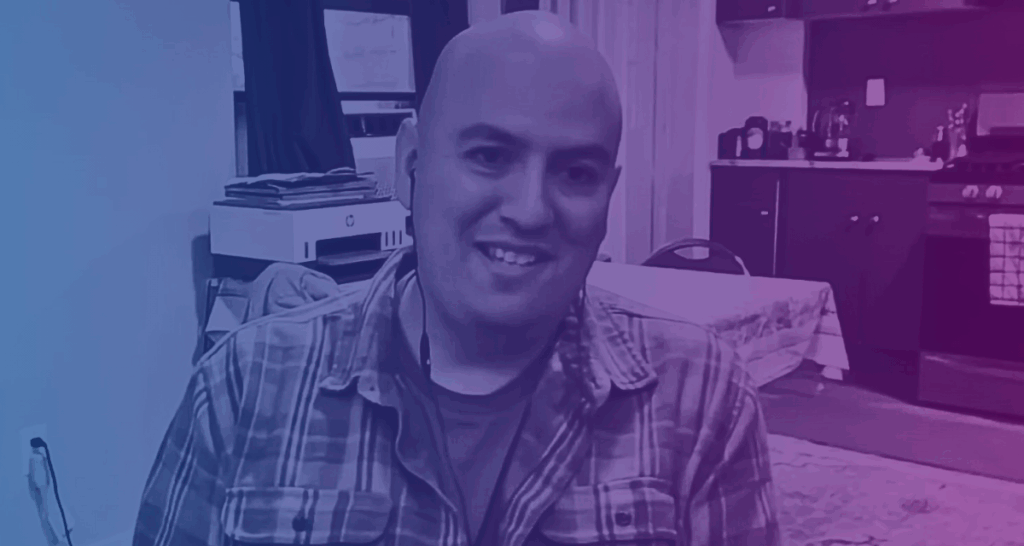
Financing your independent film can seem daunting at first. Where do you start? How do you find serious investors and financiers for your scripted or documentary project? Do you just have to have a rich uncle or film-friendly dentist?
Fortunately, there is a roadmap to financing film projects, and many who have paved the way before you. It takes know-how, hard work, timing and sometimes a little luck. A promising movie script with commercial potential can help you start raising capital, especially with one or two “name” actors attached – but the road to a fully financed film doesn’t end there.
You may have heard about distributor presales, film tax incentives and gap loans for financing productions, but don’t necessarily know how they work or how to get your hands on them. We’ll look at all those options below.
But first, let’s talk about the precursor to all of that: film equity financing.
Equity Financing for Your Film Project
As a producer, you will typically have to raise 30-50% of the planned film budget on your own first, through equity financing. It’s called “equity” because you’re literally selling ownership in the film to investors, who hope to make their money back (plus a profit) when your independent movie becomes the next sleeper hit at SXSW.
Equity money can come from a number of places, including private investors such as family, friends or local businesses, as well as film funds or grants from nonprofit organizations.
You may have executive producer partners who bring their own cash to the table, or someone else’s. You yourself may even come with funds – though most filmmakers try to avoid financing their own projects, knowing they are going to be doing a lot of unpaid production work as it is.
The portion of the budget you raise at this stage will often be a patchwork of funds from many different sources. That’s not uncommon for independent films, and this raise may help inspire some confidence in senior lenders, back-end private investors and your bond company. (More on bond companies in a bit.)
You may also consider incorporating the project with an LLC or corp, allowing you to sell securities to private investors, which in effect means you’re raising capital in exchange for equity in the corporation. This guarantees investors a percentage of the film project’s profits, while cutting into your share of potential return.
As the producer, if this is your production, you’ll want to do everything you can to maintain the controlling majority share of the company.
Attaching Talent to Your Film with a Bridge Loan
Bridge financing fixes one major hurdle you might face at the start of your film financing journey. Often, in order to secure a major talent, a key crew member or director, you’ll need to pay them and their agents a deposit up front.
But how? You need the talent attached to the project to raise the funds in the first place, right? But to get the funds you need the talent. We’ve got ourselves a real Catch-22 brewing!
This is where a bridge loan comes in. Here’s what you do: reach out to production investors interested in paying for your talent, on the condition their funds will only be released to you if the talent agrees to commit. This curbs risk for your investor and gives you the promissory note you need as collateral for a short-term bridge loan.
When the cash from the loan is in escrow for the talent, and the talent has signed on to the film, the investor’s committed funds are released. Now you can pay back the bridge loan with interest. There you have it, talent attached! With that squared away, you can start debt financing.
3 Types of Debt Financing for Filmmakers
Once you have 30% or more of your film’s budget in cash and any name talent to boot, there are several avenues for raising the rest of your budget with debt financing. These are various kinds of production loans made by banks who take a calculated risk based on some solid piece of evidence that your film will be successfully completed (a.k.a. collateral).
The producer can make more profit with debt financing than they can with equity financing, though it’s not quite as easy to come by and you’ll be on the hook to pay it all back. Why is debt financing more profitable for you, the producer?
Private investors get a percentage of the film’s profits proportionate to their initial investment without limit, for as long as the movie makes money.
Banks, on the other hand, make money with a set interest rate on the fixed amount they lend. Once they’re paid back, with interest, they’re out of the equation and you maintain a larger amount of equity in the project. Banks do not want to be in the filmmaking business – they like calculated risk with known payouts.
Let’s look at some different forms of collateral that you can take to lenders and banks for a loan on your project.
1. Pre-selling distribution rights in foreign territories
Using a reputable sales agency, you can sell distribution rights piecemeal to various foreign territories before you even enter production, hence “pre-sales.” Those foreign distributors could pay the full amount up front, just based on the strength of the script and attached (or “packaged”) elements such as director and talent.
But often such pre-sales will yield just a modest deposit and a promissory note to pay the rest upon completion and delivery of the finished film. In these cases, you can take that promissory note to lenders as collateral to get a production financing loan – after all, a pre-sale doesn’t do you much good if you don’t end up with enough funds to go out and produce the movie.
Producers have a greater chance at profit with this avenue, making it a popular tool in debt financing for films.
Side note: pre-selling distribution rights to foreign territories is different from waiting until your film is finished and getting tons of buzz on the festival circuit. While you need money now to pay for the project, it’s also a good idea to reserve your domestic market and some key foreign territories for when your film does hit the screen at festivals, as those deals are almost always more lucrative.
Foreign distributors to whom you pre-sell rights get a discount for taking a flyer on your project up front. They will give you a “minimum guarantee” that defines a flat fee, effectively giving them the exclusive right to show your film in a specified territory. But there is a catch. They often only pay out that minimum guarantee once the project is delivered to them, ready for exhibition.
2. Financing against a state tax incentive
State tax incentives offer another robust avenue for raising the funds you need before production begins. But how is that, you ask? Don’t film tax incentives usually pay a credit or rebate only after you’ve spent the money in that production state?
Absolutely – but it’s such a safe bet with a well-vetted budget and incentive application, there are financiers and lenders out there willing to put up some of that money in advance, with the expectation that they will reap the reward of the incentive money once you’ve finished the project.
It’s important to note that you won’t get the full amount of a state’s film incentive in the form of financing. For one thing, the lender has to make money back on your future incentive dollars, and they’re going to bake that into the amount they’ll put up.
But additionally, when you’re working with a transferable tax credit, you have to factor in a discount because you’re going to be selling that credit to an in-state business on the open market. Depending on supply and demand, that could mean you (or your lenders) only get back 85-90% of the state’s published incentive amount. They will know the market rate and adjust conservatively, but it makes you look good to know that going in.
Need a handle on film incentives? Reach out here.
3. Gap financing to top off your film funding
You may still need to close a final gap in your budget. We have just the thing: A type of mezzanine loan, a gap loan can close a difference of up to 10-15% of your total budget.
A gap loan is one that uses unsold, often foreign territories and rights, as collateral. Don’t count on raising capital this way using unsold domestic distribution rights, as this is seen as too risky for most banks. Why is this? The U.S. domestic market is highly competitive, making your chance at a distribution deal much less likely than getting one overseas. While still not without risk, lenders are more likely to lend against a more predictable market, such as a foreign territory, with an interest rate to match.
If the amount reaches more than around 10-15% of your total film financing package, the gap loan becomes a supergap loan. This creates additional exposure for the bank and thus will cost you more in interest and fees.
The good news is you can use the minimum guarantees from the distributors, unsold territories and rights, and state tax credits as collateral to apply for senior lending. However, lenders may still find financing your project too risky. This is where your bond company comes in.
What Is a Bond When It Comes to Film Financing?
A film completion bond, much like a large insurance policy, will guarantee the loan gets paid back, thus taking on the risk the bank wants to avoid. Basically, the bond guarantees the project gets made.
There is the ever-looming threat that the bond company could “take over” your film if things get way off schedule; in reality, that almost never happens. The bond company doesn’t want to be in the business of making films either.
The bond company, such as our frequent collaborator Media Guarantors, will walk you through the entire process of bonding your project. They will plan out the appropriate repayment timeline and give you a total, including interest costs, fees, and closing costs in your budget, getting you closer to the net amount of funds you can actually use for the project.
With bond in hand, you can close on those bank loans made against your distribution pre-sales and tax credits and apply for that final gap loan, getting the money you were promised on delivery of the project, and some money from unsold territories too, to use in the actual budget of the project.
The Cost of Financing
By now you may be thinking, “All this debt financing costs money – doesn’t that eat into my budget?” In a way, yes. Production loan fees can range from half a point to several points. That’s why lenders will evaluate the project and production team not by merely the size of the loan, but the entire loan facility.
The loan facility is simply the maximum amount a lender wants you to owe them, including interest and fees. Since all of that is expected to come out of the loan itself, and not producers’ pockets, effectively it means the amount available to fund your production will be less than the total loan amount.
If you can work with an experienced production accountant and manage to get your loan fees, interest reserve and legal costs into your film’s budget, this will not only give you a truer picture of what you have available to spend, but also score points with the lender when they see you really know your stuff.
Bottom Line on Film Financing
Financing your film may feel like an uphill battle, with risks and rewards aplenty. But as we’ve seen, there are a number of routes to get there. Armed with the right knowledge and tools, you can make it happen.
Looking for financing on your feature film? Get help here.
